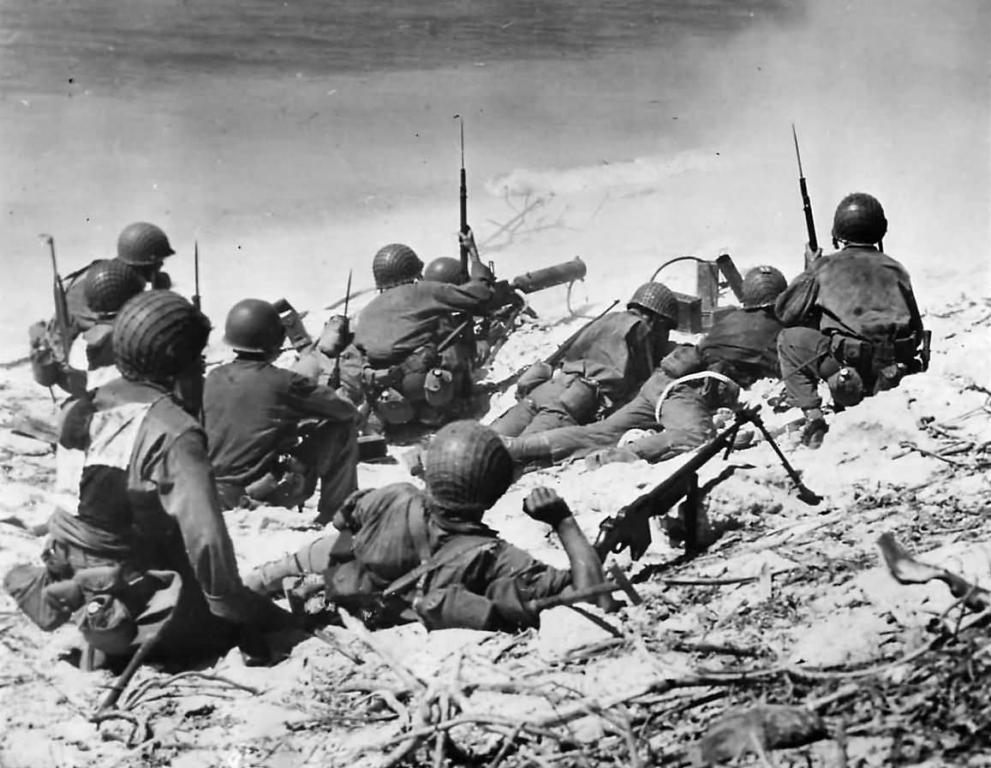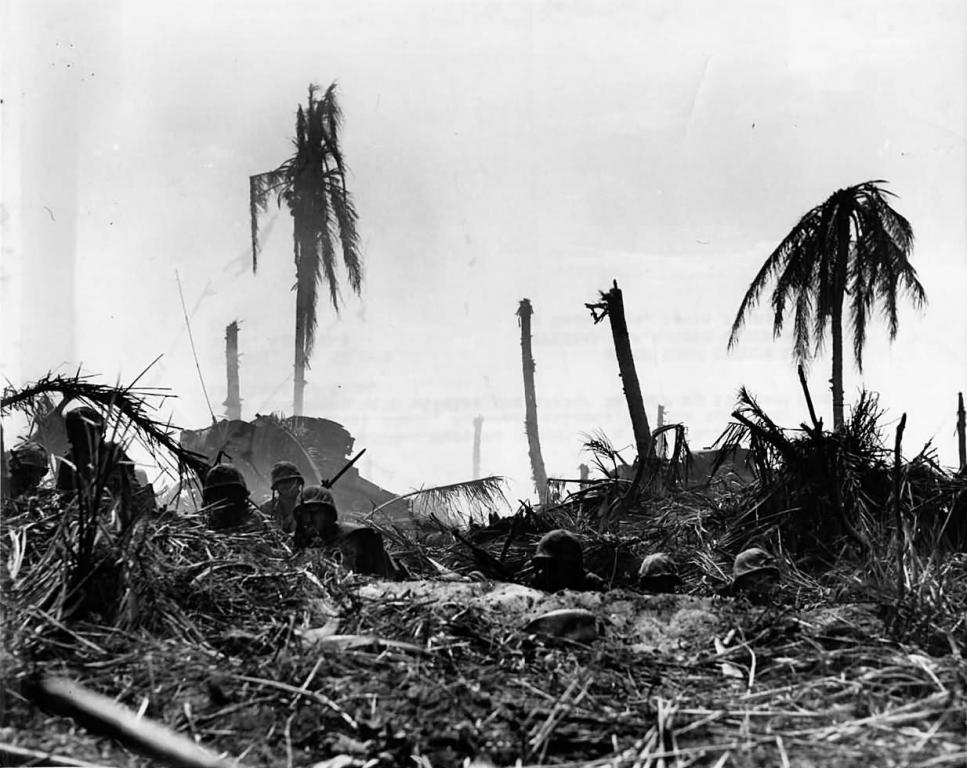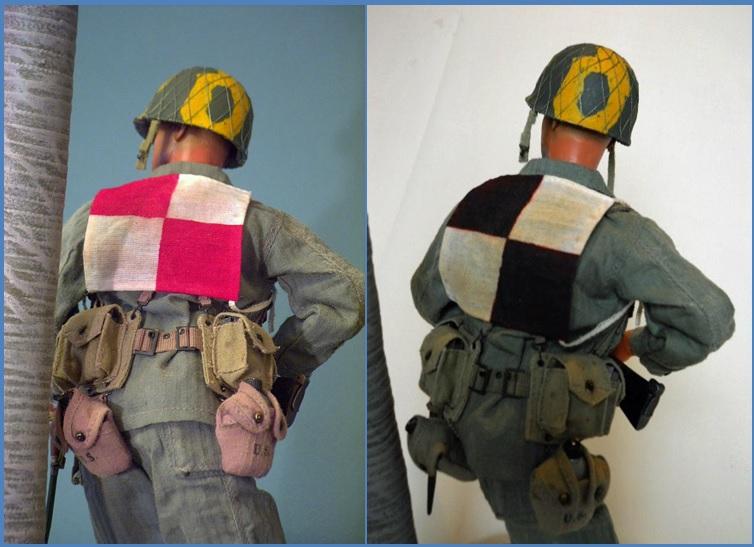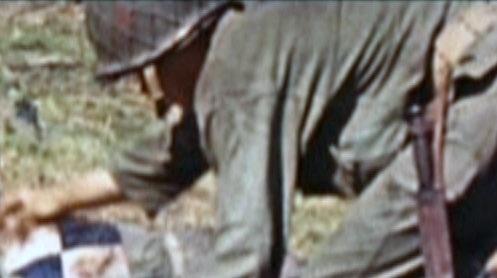-
Contributing Member


17-016 Garand Picture of the Day
Last edited by Mark in Rochester; 01-16-2017 at 03:22 PM.
He is no fool who gives what he cannot keep to gain that which he cannot lose
There are no great men, only great challenges that ordinary men are forced by circumstances to meet.
-
The Following 12 Members Say Thank You to Mark in Rochester For This Useful Post:
25-5,
30-06_mike,
aspen80,
AZPhil,
Bill Hollinger,
Bob Womack,
CINDERS,
Eaglelord17,
ed skeels,
frankderrico,
rayg,
sjc
-
01-16-2017 03:16 PM
# ADS
Friends and Sponsors

-
Legacy Member

Pardon my ignorance, but what was the purpose of the black and white (or looks that way) panels on the backs of the two Marines in the first picture? Local c/c or is this a range (judging by the relaxed attitude of the BAR gunner)?
-
Thank You to matthanne1 For This Useful Post:
-
-
The Following 9 Members Say Thank You to Mark in Rochester For This Useful Post:
-
Contributing Member


many examples of identification panels can be found through history
The Nelson Chequer was a colour scheme adopted by vessels of the Royal Navy, modelled on that used by Admiral Horatio Nelson. It consisted of bands of black and yellow paint along the sides broken up by black gunports. Nelson, apparently, used the same style for all vessels under his command "to be distinguished with greater certainty in case of falling in with an enemy".:171 After the Battle of Trafalgar all vessels in the Royal Navy generally sported this pattern, though it was not mandated and some captains changed it. Nelson's flagship, HMS Victory, was painted with a more traditional scheme of black with yellow stripes along the level of the gunports in Chatham in 1800. Nelson later had the gunports painted black as well, creating the distinctive chequer pattern. In spite of Nelson's desire to distinguish vessels by means of this colouring, it was also found among vessels of other navies, including some ships of the United States Navy by the time of the War of 1812. It is suggested by Sam Willis in The Fighting Temeraire that the black gunports were intended to make them appear opened, and so the ship would appear more intimidating from a distance.
Navy by the time of the War of 1812. It is suggested by Sam Willis in The Fighting Temeraire that the black gunports were intended to make them appear opened, and so the ship would appear more intimidating from a distance.
Invasion stripes were alternating black and white bands painted on the fuselages and wings of World War II Allied aircraft, for the purpose of increased recognition by friendly forces (and thus reduced friendly fire incidents) during and after the Normandy Landings. The bands, consisting of three white and two black bands, wrapped around the rear of an aircraft fuselage just in front of the empennage (tail) and from front to back around both the upper and lower surfaces of the wings.
Stripes were applied to fighters, photo-reconnaissance aircraft, troop carriers, twin-engined medium and light bombers, and some special duty aircraft, but were not painted on four-engined heavy bombers of the U.S. Eighth Air Force or RAF Bomber Command, as there was little chance of mistaken identity — few such bombers existed in the Luftwaffe. The order affected all aircraft of the Allied Expeditionary Air Force, the Air Defence of Great Britain , gliders, and support aircraft such as Coastal Command air-sea rescue aircraft whose duties might entail their overflying Allied anti-aircraft defenses. To stop aircraft being compromised when based at forward bases in France
, gliders, and support aircraft such as Coastal Command air-sea rescue aircraft whose duties might entail their overflying Allied anti-aircraft defenses. To stop aircraft being compromised when based at forward bases in France , D-Day stripes were ordered removed a month after from the upper surfaces of airplanes, and completely removed by the end of 1944
, D-Day stripes were ordered removed a month after from the upper surfaces of airplanes, and completely removed by the end of 1944
The Combat Identification Panel (CIP), also known as a Coalition Identification Panel, is a device mounted on military ground vehicles to distinguish them from the enemy during battle.
History
Combat Identification Panels were developed after the Persian Gulf War to reduce friendly fire incidents among allied ground forces. These panels are designed so as to produce a distinct and easily identifiable infrared signature when seen through thermal imaging systems. Originally created as a hasty expediency, the use of low-thermal-emissivity tape and physical separation from the body of the vehicle meant that the panel would appear as a contrasting dark (i.e. cooler) area through thermal viewers.
CIPs first saw widespread use in the Iraq War where nearly all coalition vehicles were equipped with these devices, usually mounted on the sides and rear of the body and/or turret. Some were even mounted on the driver and front passenger doors of Humvees with a special cutout so the door handle could still be accessed through the panel, as well as on the hood between the windshield and the top grille.
Seems like the lessons from previous wars are being learned over again
Last edited by Mark in Rochester; 01-16-2017 at 08:05 PM.
He is no fool who gives what he cannot keep to gain that which he cannot lose
There are no great men, only great challenges that ordinary men are forced by circumstances to meet.
-
The Following 6 Members Say Thank You to Mark in Rochester For This Useful Post:
-
Advisory Panel



Originally Posted by
Mark in Rochester

Lt. Suki Ohashi's wears an orange panel maker as a vest
It was also spoken of during live interview with his platoon Sgt and troops. He also wore his rank in the face of the enemy.
-
-
Contributing Member


As always Mark excellent information supplied by yourself to the forumer's here 
-
Thank You to CINDERS For This Useful Post:
 Information
Information

















 PM
PM













